Fuck me but it’s cold. I just left the city with the world’s best weather and am now in late-December London.
‘Nuff said.
I’ll post more as soon as I find my willy.

Personal stuff
Fuck me but it’s cold. I just left the city with the world’s best weather and am now in late-December London.
‘Nuff said.
I’ll post more as soon as I find my willy.
As I get ready to leave South Africa, some random thoughts:
Unless something really strange happens, I won’t be back. Had you told me as little as a few months ago that I’d be coming back to the Vaderland, I’d have laughed in your face. I’d never planned on coming back, ever, once I left back in 1986; but here I am anyway, which means never say never. I sincerely doubt that I’ll come back again, though, because now that I’ve seen the post-apartheid Seffrica, it’s a case of “been there, done that” and repeating the experience would be meaningless.
The only thing that might tempt me into returning to Johannesburg is the weather. I’ve often said that Joburg (or “Jozi” as it’s now called) has the best weather in the world, and this trip has only reinforced it. Hot days are made bearable by the cool breezes — and there’s always a cool breeze blowing, 24/7 — and even if it gets really hot, the relative humidity seldom tops 10% unless during the frequent afternoon showers, which cool everything down. It’s what I’ll miss the most in chilly Britain and oven-like Dallas.
Times change, and so have my tastes. Castle Lager, for example, doesn’t taste as good as Wadworth 6X; even though Castle is better than any other lager I’ve drunk, I don’t enjoy lager beer as much as I now do bitter ale.
One thing that hasn’t changed is the quality of South African fruit. Good grief; I’ve lived in the U.S. for thirty years, have eaten fruit there for all that time (I love fruit, just about all of it), and honestly, South African fruit beats it all by a country mile. This is not some kind of “fruit chauvinism”, mind you: it’s just better than anything I’ve ever tasted in the U.S.
Neither Seffrica nor Britishland offer us yogurt fanatics the variety and quality of the Murkin stuff. No other brand or type (and I’ve tried LOTS) in either SA or the UK has provided a decent substitute. I can’t wait to start eating Noosa again when I get back to Texas in January.
Malls are malls are malls. I’ve been to five different ones across two South African cities, and other than the local brands and kiosks, they are completely interchangeable with those in the U.S. and the U.K. All suck green donkey dicks, and unless I need a specific product or service that I can only get from a particular store, I don’t want to go back inside another one, in any country. The homogenization of retail has finally been achieved, and meatspace mall shopping is unexciting and a total drag. (Biggest letdown: Sandton City outside Johannesburg. Once the crown jewel of South African malls, it’s not only unremarkable now, it’s crappy, especially when compared to the Menlyn Park mall outside Pretoria, which is twice as enjoyable despite having about 80% of the same stores.)
As I mentioned earlier, I love the emergence of the Black middle class in South Africa. Here’s what actually makes me the slightest bit hopeful about the situation here: middle-class South African Blacks want precisely the same things as middle-class Brits, middle-class Americans and perhaps as the middle classes of any capitalist country. And the sheer size of the middle class Black sector is going to propel South Africa into a prosperous future, as long as (a big if) the government doesn’t fuck it up royally.
I’d forgotten how much I like full-service gas stations, with free checkups of fluids and a windshield cleaning thrown in. (The price of gas here, however, makes me homesick for Texas. Even the Brits have it better than the Seffricans.)
Not many girls have tattoos, thank Gawd. Maybe it was just a feature of middle-class Johannesburg, but I saw very few in evidence. The Seffrican men are about the same as Brits and Murkins, tattoo-wise, but guys are idiots so ’nuff said on that.
I cannot repeat often enough how much I hate the walled-up fortresses known as “homes” over here. Apart from the ugliness (and it is really ugly, even in otherwise-beautiful neighborhoods), I hate the insecurity and paranoia that the barbed-wire-topped walls must engender. This alone makes my return to SA a remote prospect — and despite the exchange rate that would give me a decent standard of living over here, the compromise of the quality of life… eh, forget it.
I met a bunch of old friends over here for the first time in many decades, and I’m pleased to say that nothing has changed. We’ve all gotten older and more rickety, of course, but our friendships have endured absolutely unchanged from back then. All of them — and they know who they are — have an open, undated invitation to visit me in Texas. True friendship really does seem to be eternal, makes nonsense of both time and distance, and I cannot express how glad I am of that.
And if there’s a better note on which to end my experiences here, I can’t think of it.
One of the good things about not having seen South Africa since 1986 is that the changes that have come about are massive — no slight incremental ones, just vast ones.
The best thing that’s happened is that everything happens in English — no more mandatory English/Afrikaans nonsense — and even in Pretoria, the most Afrikaans of cities, you’re served in English even when the store employee is Afrikaans. This is a good thing because nothing divides a people like not having a common language, and it is appallingly inefficient to have to do everything twice. Afrikaans is still spoken in conversation, and even the English-speakers still scatter Afrikaans phrases into speech if the term is best expressed thereby. (We do it too with other languages, e.g. using a German word like schadenfreude because no similar word exists in English; and a mischievous Afrikaans term like stokkiesdraai works so much better than playing truant.) On the whole, however, English has become the de facto language of not only commerce (which it pretty much always was) but of government. It’s a massive change, and a very good one.
Johannesburg has grown beyond comprehension. The decay of the city center into a Third World hellhole has meant that expansion into the outer areas has been almost geometric. The population of metro Johannesburg, when I lived here, used to be about 1.5 million; now it’s nearly 4.5 million; and Greater Johannesburg (what used to be called the Witwatersrand) has gone from about 3.5 million to 8 million. Along with this has come traffic, lots of traffic: at midday, the freeway system (which is excellent — better than that of Dallas or even Chicago) looks more like Los Angeles than anywhere in Africa. The major roads are (amazingly, to me) uniformly excellent — much better than in any U.S. city, and where Dallas tries to get by with an eight-lane highway bypass, Johannesburg uses twelve lanes on its N3. Also, instead of concrete slabs, Johannesburg freeways are seamlessly tarred, which means a smooth, almost silent ride. The surfaces are very well-maintained, and it’s only the small suburban streets which are showing their age.
Those massive highways are needed because another amazing change has been the explosion of commerce and industry along the Johannesburg – Pretoria corridor. Where once they were two distinct cities, with vast areas of open veldt on each side of the various freeways connecting them, the highways between the two cities now look like those between Los Angeles and San Diego or Dallas and Fort Worth: hundreds of factories, warehouses, townhouse developments and office complexes. The little town of Fourways, north of Johannesburg, which was once literally just that: a four-way intersection of two 2-lane roads with a shop at only two adjacent corners, is now a dead ringer for Plano, Texas, with several highway interchanges and a plethora of office complexes and housing developments — and Fourways has now blown over its boundaries and the development has moved to the area known as Midrand — in my time a couple of warehouses and a cement factory and gravel pit — which now looks like any exurban area in the United States such as Thousand Oaks or San Jose, in California. Even my old hometown of Bedfordview, once a sleepy little suburb which fed Johannesburg with a diet of middle-class workers, is now a town in its own right with several large shopping malls and a couple of restaurant-rich complexes which, when I visited one, was filled with diners. Which leads me to the next point.
None of the above would be possible in a Whites-only environment. When I lived here, South Africa had an economically-active population of about 6 million people (out of a total of about 30 million). Now the economically-active population is, at a rough guess, about 25 million (out of 40 million). The emergence of a large Black middle-class means that Johannesburg can truly call itself a proper city at last. None of the restaurants or businesses could exist on a White-only clientele, and a full 40% of the diners at the Turn ‘n Tender restaurant in Bedfordview (where I had lunch yesterday) were Black: well-dressed suburbanites driving late-model BMWs, Land Rovers and Mercedes, as well as VWs, Renaults, Citroëns and Toyotas. And as I sat there eating my lamb stew (pic below), a black family was sitting in a Bentley as it purred past on its way to the exit.
I expected that the annual inflation rate (officially 12%, but actually around 15%) would have rendered prices to be on a par with (say) the U.S., but not so. A good-sized 4-bedroom house on a quarter-acre in a Plano-type neighborhood will run about $300,000. I don’t know if salaries have kept up, but I suspect not; which means that the relative price is probably closer to $500,000 — which makes it very close to U.S. levels. Still, I’ve been heartened by the evidence of Black families owning houses in the well-to-do neighborhoods — also on a par with Plano, at a rough guess.
Those are the good changes I’ve found. Tomorrow I’ll talk about the changes which have jarred me.
Aside: I’ve been indulging myself on South African food whilst I’m here; after all, I can eat steak and spare ribs in Dallas and fish & chips in England, anytime. Yesterday was Lamb Potjie (“little pot”), which as the name suggests, is served at the table in a small 3-legged iron pot, thus:
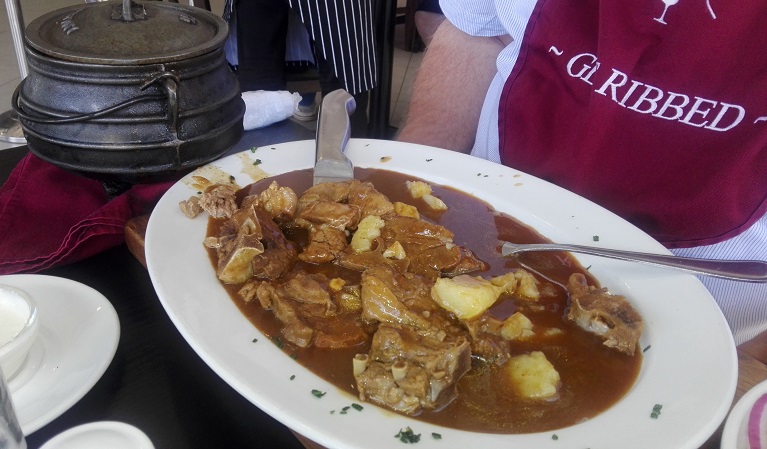
You’re supposed to leave it in the pot and just serve it piece by piece, so it stays warm in the pot, but I dished it all out so y’all could see the quantity, which could easily serve two people (I’d already had a couple mouthfuls before I remembered to take the pic). Cost: R95 ($7.25). That’s one thing that hasn’t changed: food is good, and not expensive. That quantity of food in London would have cost at least £27 ($36).
I went out to dinner with three friends the other night. I picked up the tab for dinner — which included steak / seafood main courses, desserts and wine — and the bill came (with tip) to R1,100 ($87). Tips, by the way, are 10%, and not mandatory. I raise eyebrows by tipping 20%, because the service has typically been outstanding; and I should also add that the waiters have all been Black (another massive change since I left).
Grocery store prices are incredibly low, by the way. I won’t bore you with the details, but allow me to show you some pics of a store called “Food Lover’s Market” in Pretoria:
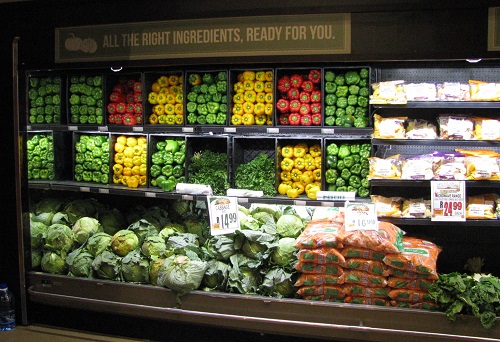
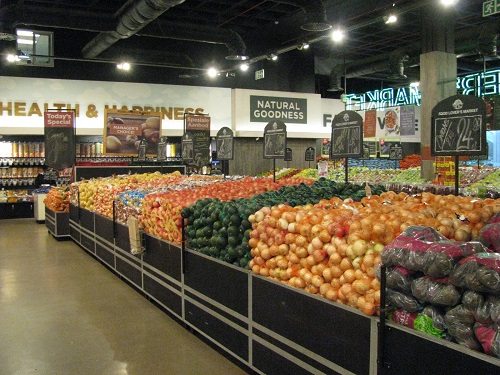
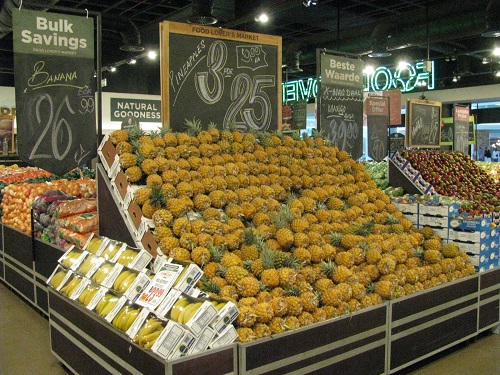
The price works out to about $0.63 per pineapple. Compare that the next time you go to CostCo or Sam’s Club.
I didn’t really know what to expect when I decided to go and see the house where I grew up (ages 3 – 23). Given that Johannesburg has turned into a series of walled fortifications, I expected not to be able to see the house at all. Here’s an example of the security almost all houses surround themselves with these days:
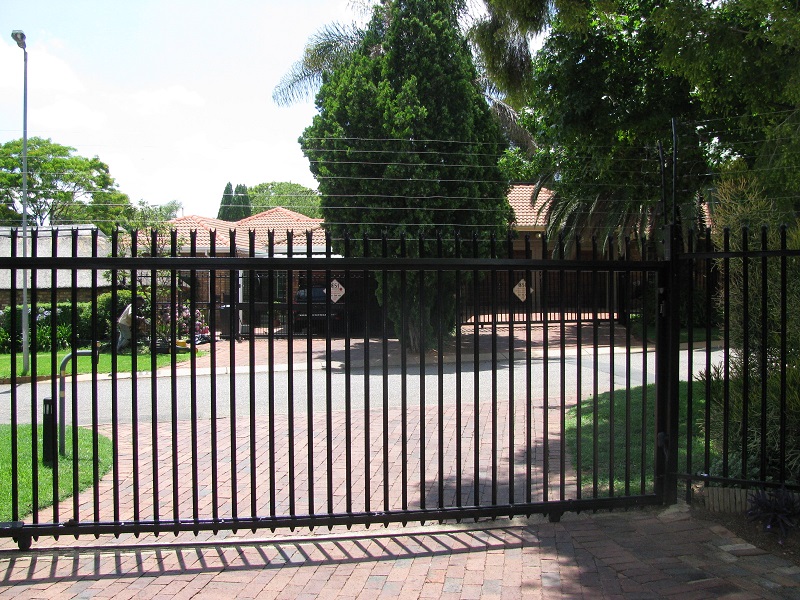
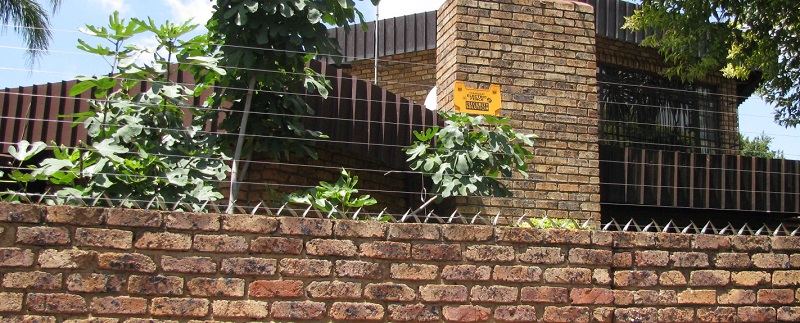
…and mostly, the gates are solid wood or steel, to prevent “crash” robberies.
So my heart sank a little when I turned onto the old road, and saw this:
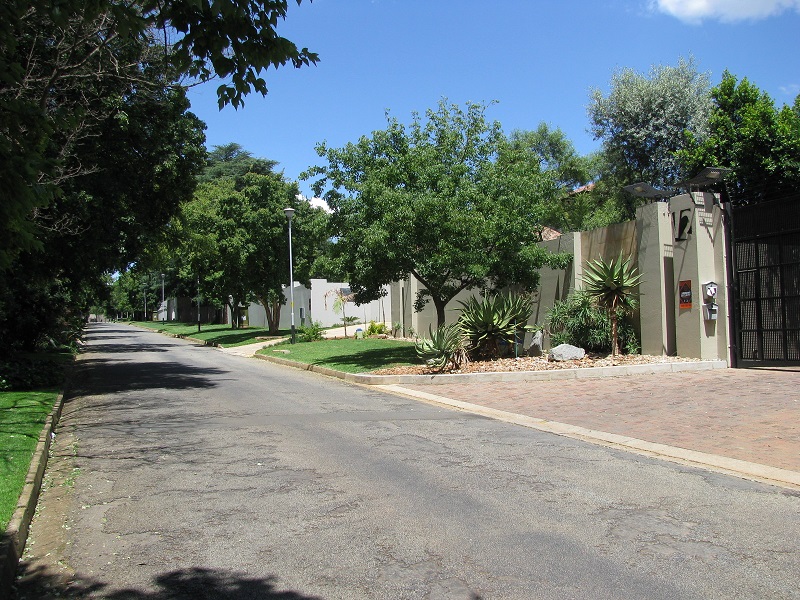
…but when I got to the old house, I was pleasantly surprised to see that the current owners have not succumbed to paranoia (or, to be cynical, prudence):
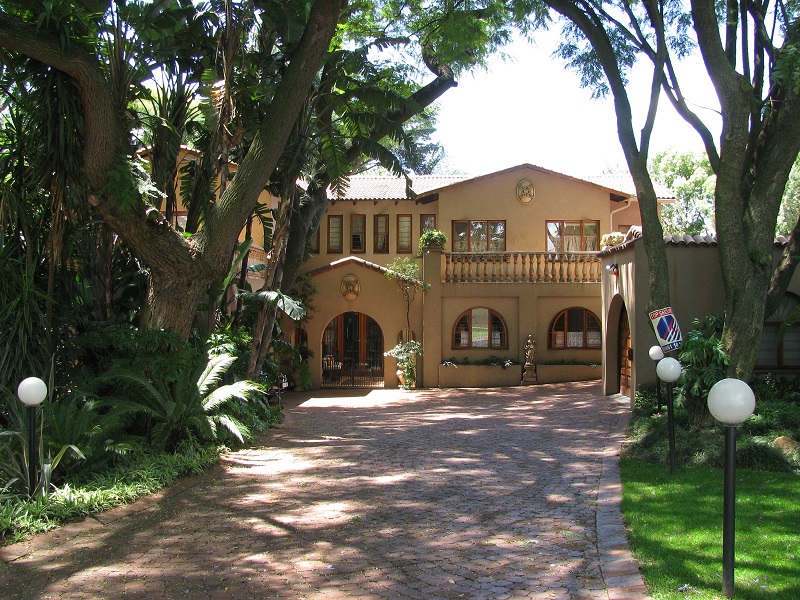
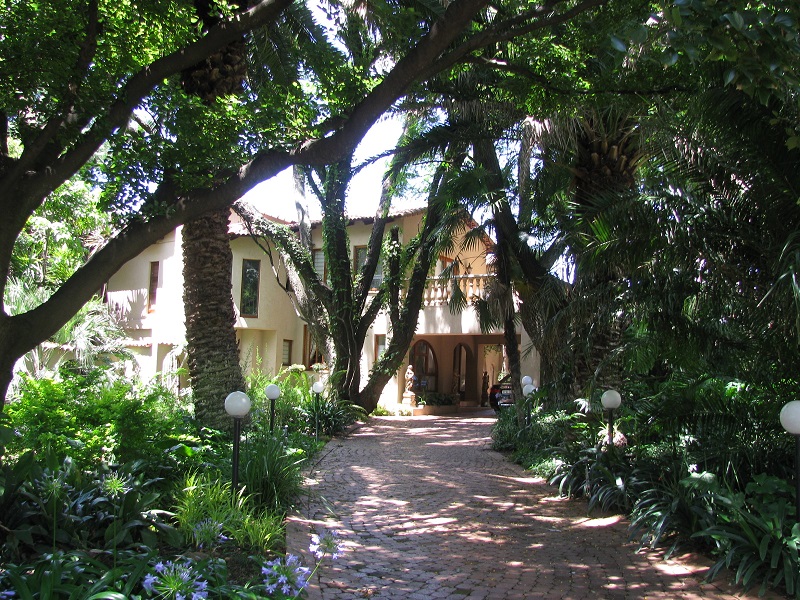
The place has changed quit a bit (and for the better, I think), as it now has a Mediterranean feel to it. When my father originally built it back in 1957, it was the height of 1950s architecture — i.e. pig-ugly by today’s standards — but now its design is almost timeless.
And having just come from the south of France, I like this far better.
Some details: it sits on a hectare (about 2.5 acres), and while some of the other places have been subdivided into two, old Number 7 hasn’t. The house is about 4,000 sq. ft in size, unless they’ve added on some more in the back, which I couldn’t see through the trees.
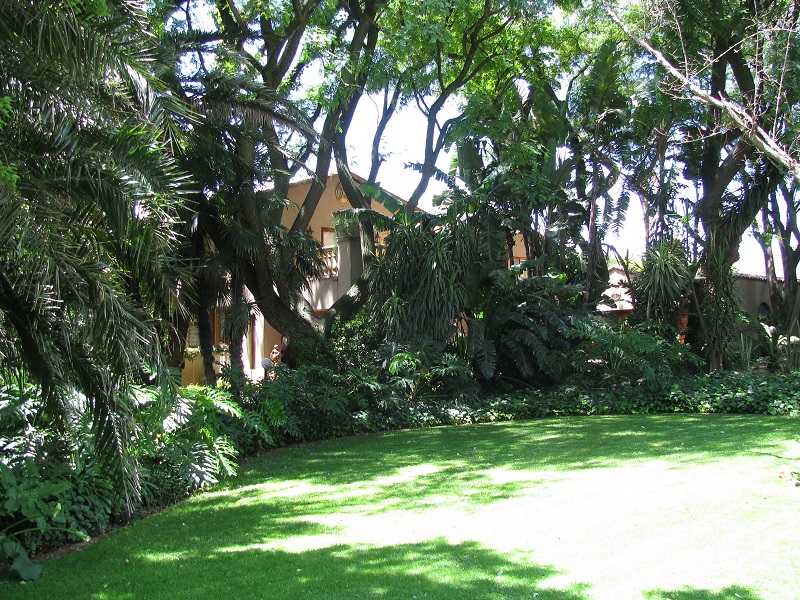
It looks quite lovely, and I’m glad I got to see it.
Tomorrow, I’ll talk about what I’ve seen in and around Johannesburg.
“Here” is “anywhere along the Midi (Southern France coastline)”, where I spent last week. Never mind the usual tourist pics like this one:
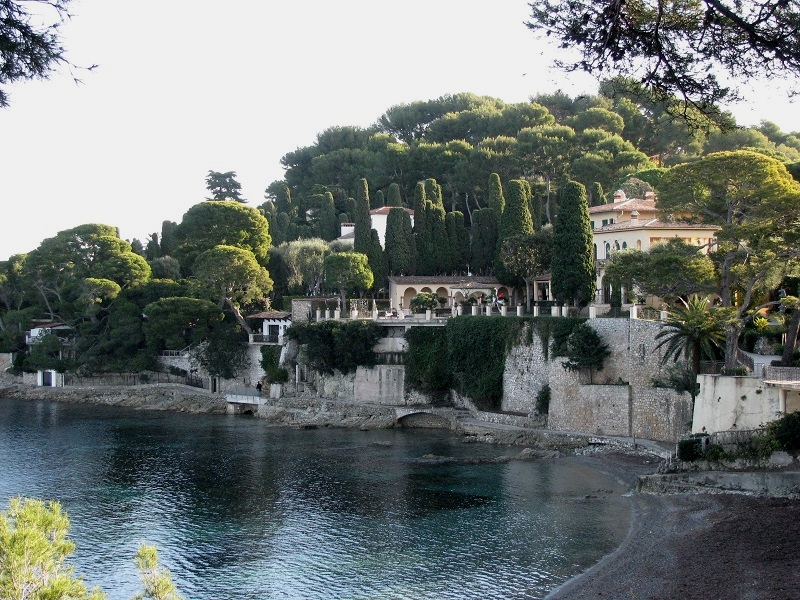
…because to buy one of those houses you’d need to win not one but three or four large $100-million+ lotteries.
No; I could live in one of the smaller places up the hill such as in Beausoleil, La Turbie or especially Juan-Le-Pins, well off the tourist areas, where prices are not even close to California levels — as long as you don’t doing a bit of renovation. But good grief, the views:
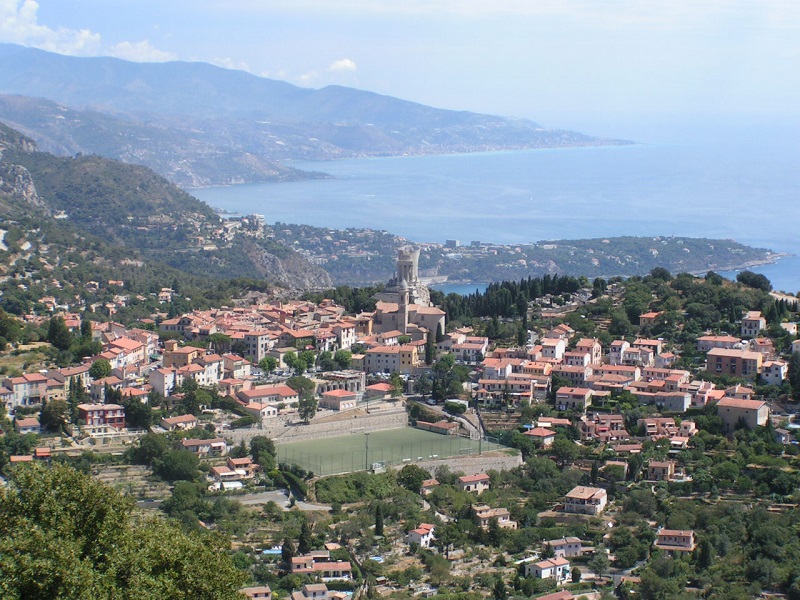
Apartment rentals are not bad: depending on the quality of the place, about $2,000 per month for a small 2-bedroom apartment (in Plano, I was renting a 1-bed for just over $1,200). Here was the view from Longtime Friend & Drummer Knob’s place in Beausoleil, just outside Monaco:
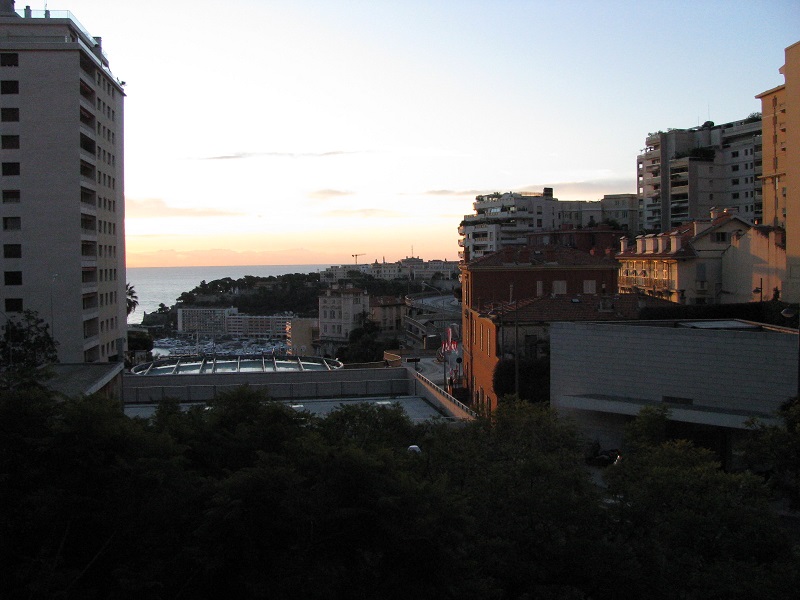
The weather is just about perfect, the food is about the same price as the U.S. (if you avoid the tourist traps along the coast) and the towns look like this:
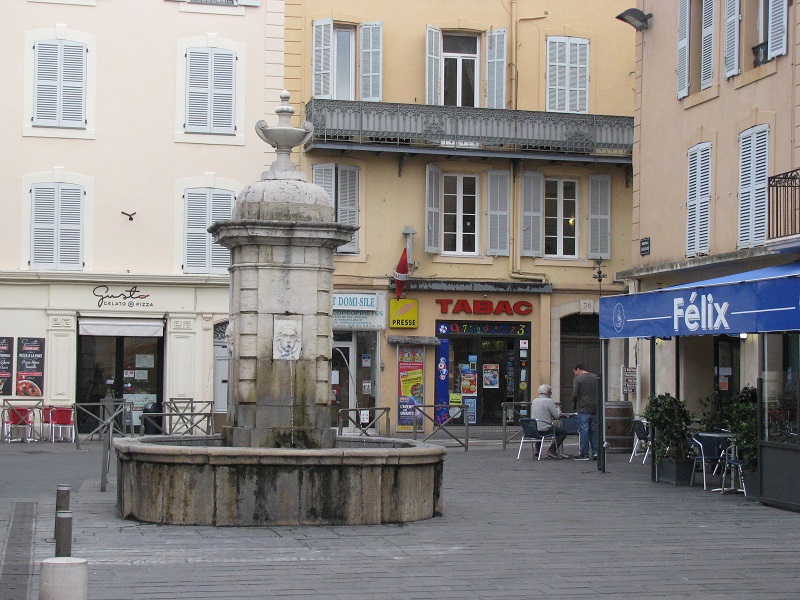
A few miles inland, by the way, are drives like this:
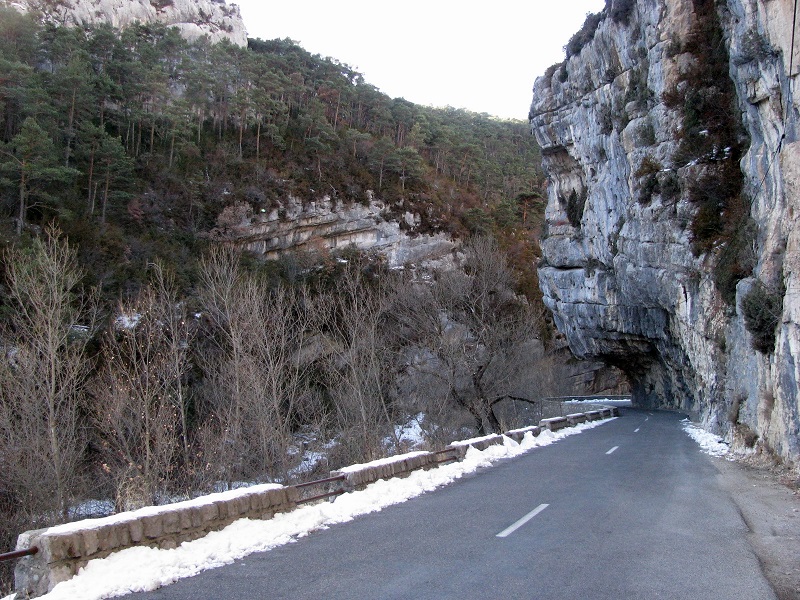
…and given the season, that’s about as ugly as it gets. Gawd knows what it’s like in summer.
I need to brush up on my French (which, by the way, is in a sad state of dilapidation after years of non-use). Amazingly, my halting Franglais (for so it has become) was met with sympathy and even friendliness — the people in the Midi do not live up to the reputation of the French as surly xenophobes; quite the opposite.
I didn’t take too many pics of my trip there, because I knew after about three hours that I would be coming back.
If you’ve never been to the south of France, you owe it to yourself to go. Start saving now; you will never regret it. (I would recommend April-May or September-October, to avoid the high season when prices and such are sky-high.)
Oh, and did I mention the food? That’s for another post.
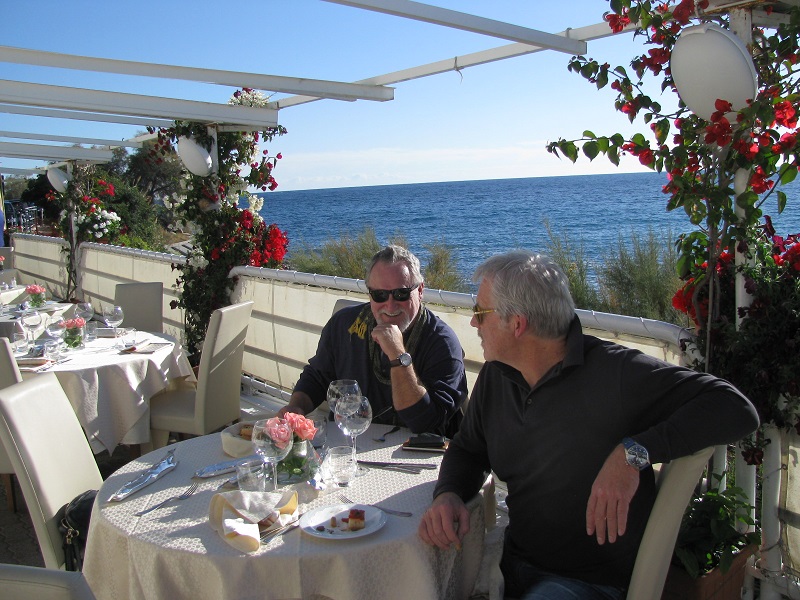
No time to post anything cultural today; I’m off to the south of France, e.g.:
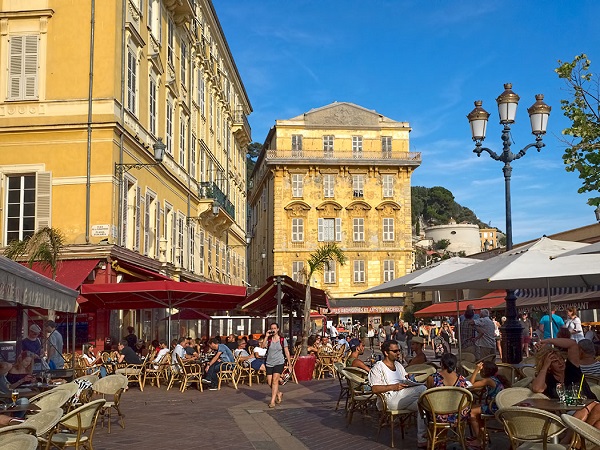

…and tonight I should be dining somewhere like this:
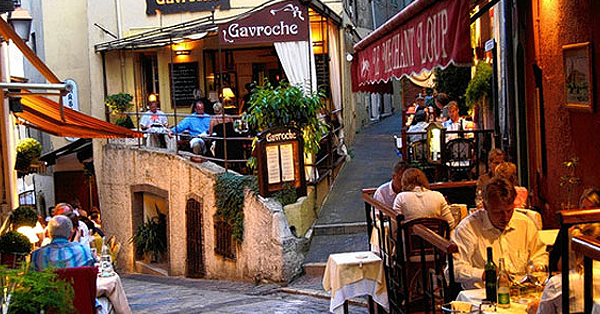
Yeah, I’ve had enough cold weather for a while, although apparently a cold front has swept through the place, making the weather more like Hardy Country than the Midi. (I know, I know: First World Problems.)
Tomorrow: Monaco, or maybe Provence. (I’m in the hands of Longtime Friend & Drummer Knob, so I have no idea where we’re going or what we’re doing. Pics to follow, if I can get decent wi-fi access on the road.)